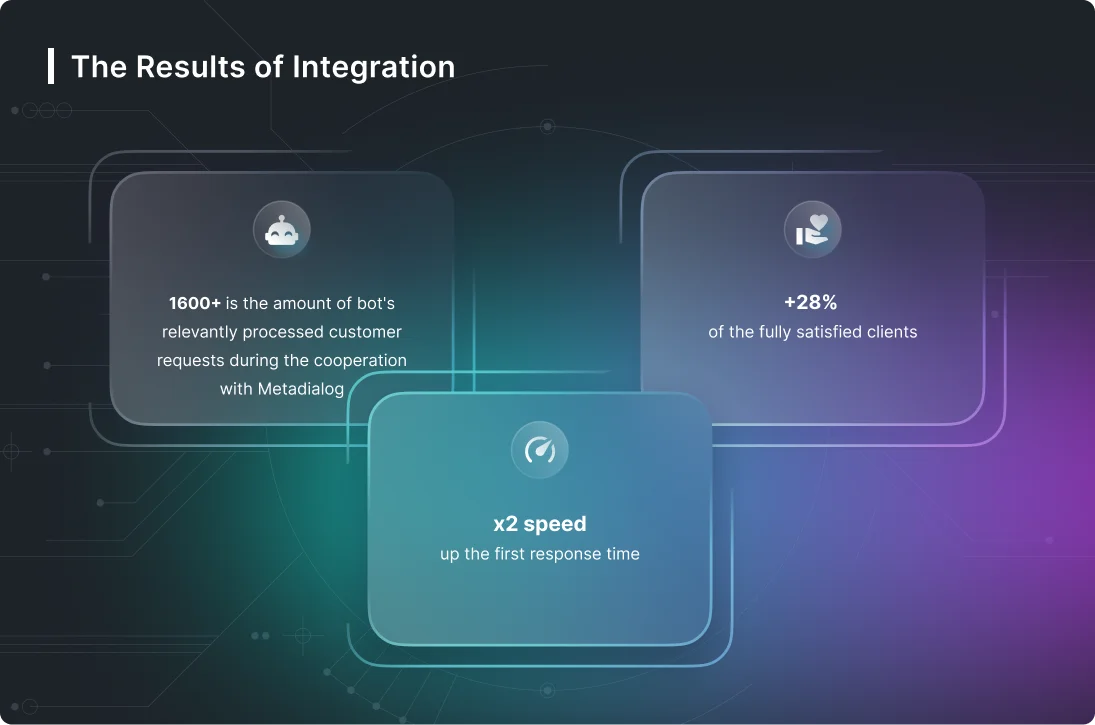How Restaurants Can Effectively Use Chatbots?
While chatbots in the restaurant business are still emerging, the evolution will benefit both restaurants and their consumers. By helping brands worldwide automate customer service, streamline transactions, and foster community, Chatbots are paving the future of hospitality. Some restaurant chatbots have machine learning capabilities built into them. This means that your chatbot can learn to develop its “own mind” and make automated decisions about the type of responses it sends customers.
A.I. Could Soon Take Your Fast-Food Order – Smithsonian Magazine
A.I. Could Soon Take Your Fast-Food Order.
Posted: Thu, 11 May 2023 07:00:00 GMT [source]
You can also design your own chatbots with our visual chatbot builder easily. Chatbots are revolutionizing the way that restaurants interact with customers. A restaurant chatbot can handle everything from taking orders and reserving tables to answering FAQs like delivery time and ingredients by simulating human conversation. We live in a time where customers demand faster and smoother services, especially in regards to their online food experience. As such, it is critical that customers are able to search and browse your restaurant’s menu in the best possible way. With chatbots, you’ll be able to instantly showcase your menu to the customers and provide them with the information they need in a quick and interactive way.
Pizza Hut’s Reservation Chatbot
AI-based chatbots offer an optimal mechanism for collecting customer ratings and feedback sans any human intervention. Thanks to machine learning, restaurants can utilize chatbots to detect and entice returning consumers with automated specials and offers. It can also send notifications through email or SMS to ensure no customer misses out on specials.
This way, @total starts with a value of 0 but grows every single time a customer adds another item to the cart. Once you create your variable move on to the next step, the formula itself. First, we need to define the output AKA the result the bot will be left with after it passes through this block. However, I want my menu to look as attractive as possible to encourage purchases, so I will enrich my buttons with some images.
Customer Support System
TGI Fridays employs a restaurant bot to cater to a range of customer requirements, such as ordering, locating the nearest restaurant, and reaching out to the establishment. Taco Bell is testing conversational AI at the drive-thru “to help us potentially automate ordering,” said Chris Turner, the chief financial officer at Taco Bell’s parent company, Yum Brands. Sister burger chains Carl’s Jr. and Hardee’s also announced plans to test Presto’s AI voice bots this year. The tech company, founded in 2018, automates the order-taking process with AI-powered virtual assistants.
The foodtech firm’s AI-powered virtual assistants take phone orders in select Wingstop locations. Its self-learning virtual assistants have been programmed to hold deep knowledge of Wingstop’s menu and can process orders in English and Spanish. The chain has also been testing autonomous delivery robots in a limited number of California, Texas, and Florida restaurants. The robots are equipped with artificial-intelligence systems and high-tech cameras that allow them to navigate traffic patterns, including maneuvering around pedestrians.
Forrester reports that chatbots that make personalized recommendations see a 10-30% increase in order value. For example, some chatbots have fully advanced NLP, NLU and machine learning capabilities that enable them to comprehend user intent. As a result, they are able to make particular gastronomic recommendations based on their conversations with clients. A chatbot is used by the massive international pizza delivery company Domino’s Pizza to expedite the ordering process.
This approach adds a personal touch to the interaction, potentially making visitors feel better understood by the establishment. Users can select from these options for a prompt response or opt to wait for a chat agent to assist them. The chatbot initiates the order by prompting you for details like the choice between takeout or delivery and essential personal information, such as your address and phone number. Domino’s chatbot, affectionately known as “Dom,” streamlines the process of placing orders from the entire menu. Before scaling, the chain will continue to test it to “ensure that it creates a great customer experience,” Turner said. The chain is also testing internally an avocado-cutting robot named Autocado.
Great Conversational Landing Pages Examples
Chatbots for restaurants can be tricky to understand, and there are some common questions that often come up related to them. So, let’s go through some of the quick answers and make it all clear for you. Okay—let’s see some examples of successful restaurant bots you can take inspiration from. This one is important, especially because about 87% of clients look at online reviews and other customers’ feedback before deciding to purchase anything from the local business.
And, as mentioned before, your conversion rates from chatbots can often be much higher since there’s a good chance most of your competitors arent using this platform as of yet. In this article, we’re going to take a deep-dive into the world of chatbots to help you decide if this might be something your restaurant wants to try out. Next, Lumo will quickly guide them through completing their order, similar to a concierge. “Generative AI is reshaping the food service industry’s guest and employee experience.
Facebook Chatbots:
Once you click Use Template, you’ll be redirected to the chatbot editor to customize your bot. It can look a little overwhelming at the start, but let’s break it down to make it easier for you. They now make restaurant choices based on feedback that previous diners have left on sites like Yelp and TripAdvisor. So, make sure you get some positive ratings on different review sites as well as on your Google Business Profile.
- Out of the 803 Checkers and Rally’s restaurants, voice AI was live in 390 as of August.
- Beyond simple keyword detection, this feature enables the chatbot to understand the context, intent, and emotion underlying every contact.
- Furthermore, for optimizing your customer support and elevating your business, you may want to explore Saufter, which comes with a complimentary 15-day trial.
While calls and paper menus still have their place, chatbots provide a convenient self-service option for guests and automate key processes for restaurants. Much like chatbots in other domains, restaurant chatbots are able to act as an excellent communication platform for customers. By using a chatbot, both brick & mortar restaurants and online restaurants will be able to quickly showcase their dishes to potential customers. Unlike traditional menus, chatbots can help customers actively search, highlight and order dishes on demand. Moreover, restaurants can also attract customers through a wide range of rich media content like pictures and videos that are integrated into the chatbot interface.
Answering frequently asked questions
It’s essential to offer users the option to end a chat once their query is resolved. This practice allows for the collection of valuable feedback through brief surveys regarding the chatbot’s performance. chatbot for restaurants Embracing platforms like messenger bots or WhatsApp can be particularly advantageous, given the substantial user base these platforms command, such as WhatsApp’s 2.7 billion active users.
As the technology behind natural language processing and chatbots continues advancing, we can expect them to become more seamless, personalized and ubiquitous. Although restaurant executives typically think of restaurant websites as the first place to deploy chatbots, offering users an omnichannel experience can boost customer engagement. In this regard, restaurants can deploy chatbots on their custom mobile apps as well as messaging platforms. The simple definition is it’s an automated messaging system that uses artificial intelligence (A.I.) to respond to customers in real time. Restaurant chatbots are most often used to take reservations, manage bookings, and request customer feedback. The driving force behind chatbot restaurant reservation development is machine learning.
Take this example from Nandos, for instance, which is using a chatbot queuing system as the only means to enter the restaurant. Use data like order history, upcoming reservations, special occasions, and preferences to provide hyper-personalized recommendations, upsells, and communications. Allow customers to gracefully end the conversation when their needs are fully met. For example, if a customer usually orders wine with their steak, the bot can recommend a specific wine pairing.

Del Taco, a regional Mexican fast-food chain based in Southern California, said in January that it would expand the use of conversational-AI voice assistants after a successful test. Some restaurants also use voice bots to take orders, but some TikTokers have recently roasted the chain after run-ins with bots led to incorrect orders. When a customer interacts with a bot and an app the two experiences feel very different even if they achieve the same thing. Using an app feels like using a tool to achieve something, while using a bot feels like the computer is assisting you through a process. Second, if you build a bot within a messaging app like FB Messenger, you can trust Facebook’s highly paid and highly trained UI team to make the interface responsive. Second, if you are willing to sacrifice the complexity of the interaction, you do not need AI to create a good and cheap conversational commerce experience.

